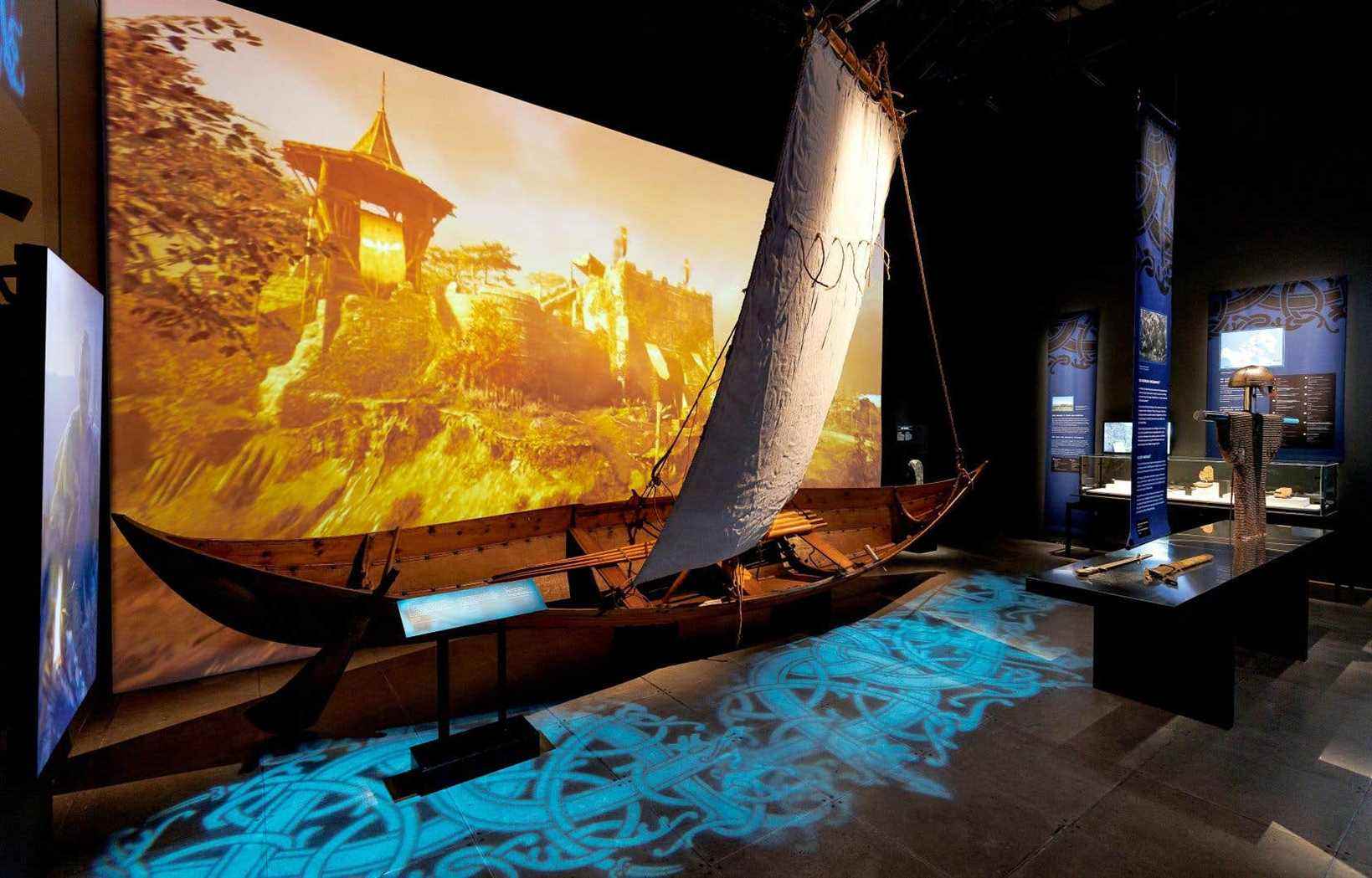Their history was written by others, since the great sagas of the Vikings were written two hundred years after their disappearance. The Vikings were rather people of oral tradition, and the Pointe-à-Callière museum documents this with the exhibition Vikings. North Sea Dragonswhich opens Thursday.
Forget the series Vinland Saga, vikings and The Last Kingdom on Netflix, or the movie The Vinland Club, by Benoit Pilon. The 650 objects presented, in collaboration with the National Museum of Denmark, are mostly authentic objects that belonged to Vikings.
You can even admire two artifacts from the Anse aux Meadows site in Newfoundland: a spindle whorl, which is used for weaving, a sacred practice among the Vikings, and a whetstone.
According to the experts, who found the remains of a large house, a forge and boathouses there, a colony of 30 to 160 Vikings would have lived there. The collection also features pieces that belonged to the Vikings, but this time found in Nunavut. It is still unclear whether the Vikings actually went there or whether these objects were instead brought there by Inuit. We suddenly learn that this people with the mythical warrior aura did something other than wage war on the seas of the world. The exhibition is presented as a series of stories dealing with different themes of Viking life: origins, daily life, travel and the perception of the end of time.
If the Vikings are often reduced to a stereotype of violent men, it is partly because their exploits were first told by their enemies, including the English monks whom they attacked, explains Peter Pentz, curator at the Museum. National of Denmark.
It is calculated that the Viking era began in 793, with a raid on Lindisfarne, a small island in the north of England, where the Vikings not only looted Christian religious buildings, but also massacred and captured monks. The end of their reign is for its part established in 1066, at the time of the confrontations of Stamford Bridge and Hastings.
In the meantime, the Vikings will have colonized Greenland. Moreover, according to Peter Pentz, “it could be that the Vikings sought to reach America to find wood there, the latter becoming rare in Greenland”. He adds that it is documented that Viking children were born at L’Anse aux Meadows. New dating methods establish that there was a Viking settlement there in 1021. “Archaeological data does not allow us to say exactly how long the site was occupied by Vikings, but does not seem to have been long before or after this date”, writes the archaeologist specialist of the site Birgitta Wallace on this subject, in the special issue of the magazine fine arts which is devoted to the exhibition.
The exhibition also explores the beliefs of the Vikings, as conceived before their Christianization. In their cosmogony, it is a sacred tree, Yggdrasil, which supports the universe and which acts as a pillar of nine distinct worlds.
